soundaware
Sponsor: Soundaware
- Joined
- Sep 19, 2013
- Posts
- 537
- Likes
- 234
Self-developed Jinling DSP technology, 3+1 decoding modes, split design, Hi-END customized materials
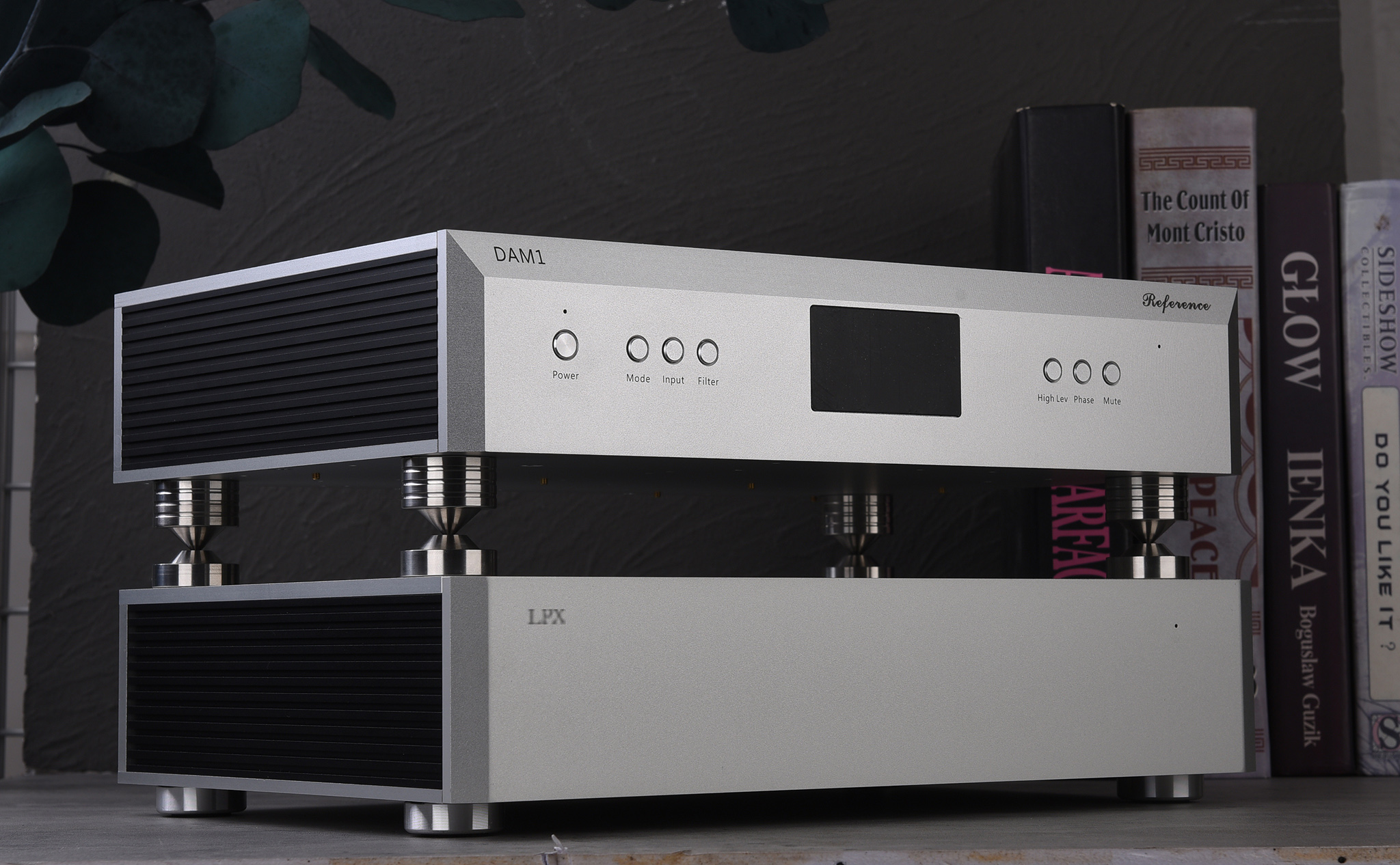
DAM1 is a Hi-END reference DAC developed by SOUNDAWARE for 4 years. It actually does not adopt the traditional reference-level DA chip default scheme to achieve desirable results. Instead, it adopts Jinling DSP audio processing architecture developed independently for 4 years, directly to NOS decoding and 1bit DSD decoding without oversampling and digital filtering, As a consequence, the serious transient distortion, undesirable linearity and monotone performance resulted from the traditional reference delta-sigma chip and digital filter are avoided, which will give rise to unsatisfactory coherence and obvious digital sense of the sound.Meanwhile, the built-in Jinling DSP provides reference upscaling and SRC with -170dB level distortion, greatly reducing the music sampling rate and clock requirements.
As a high-end DAC, DAM1 not only integrate more than 10-year experience in R&D and design of DAC module, but also uses luxurious materials. Most of the components are customized Hi-END materials, which have reached the upper limit of materials used in mass-produced products. Multitudinous materials have not even been used in high-end and reference-level DAC products in the industry in recent years.
DAM1 is called "Dream DAC" in our R&D team and user groups of SOUNDAWARE, and it can really stand out from the crowd. It doesn't do anything other than decode, it just does the core function and sound. As a consequence, it can control the price, and finally becomes a Hi-END level reference decoder that a multitude of audiophile and deep music lovers can afford.
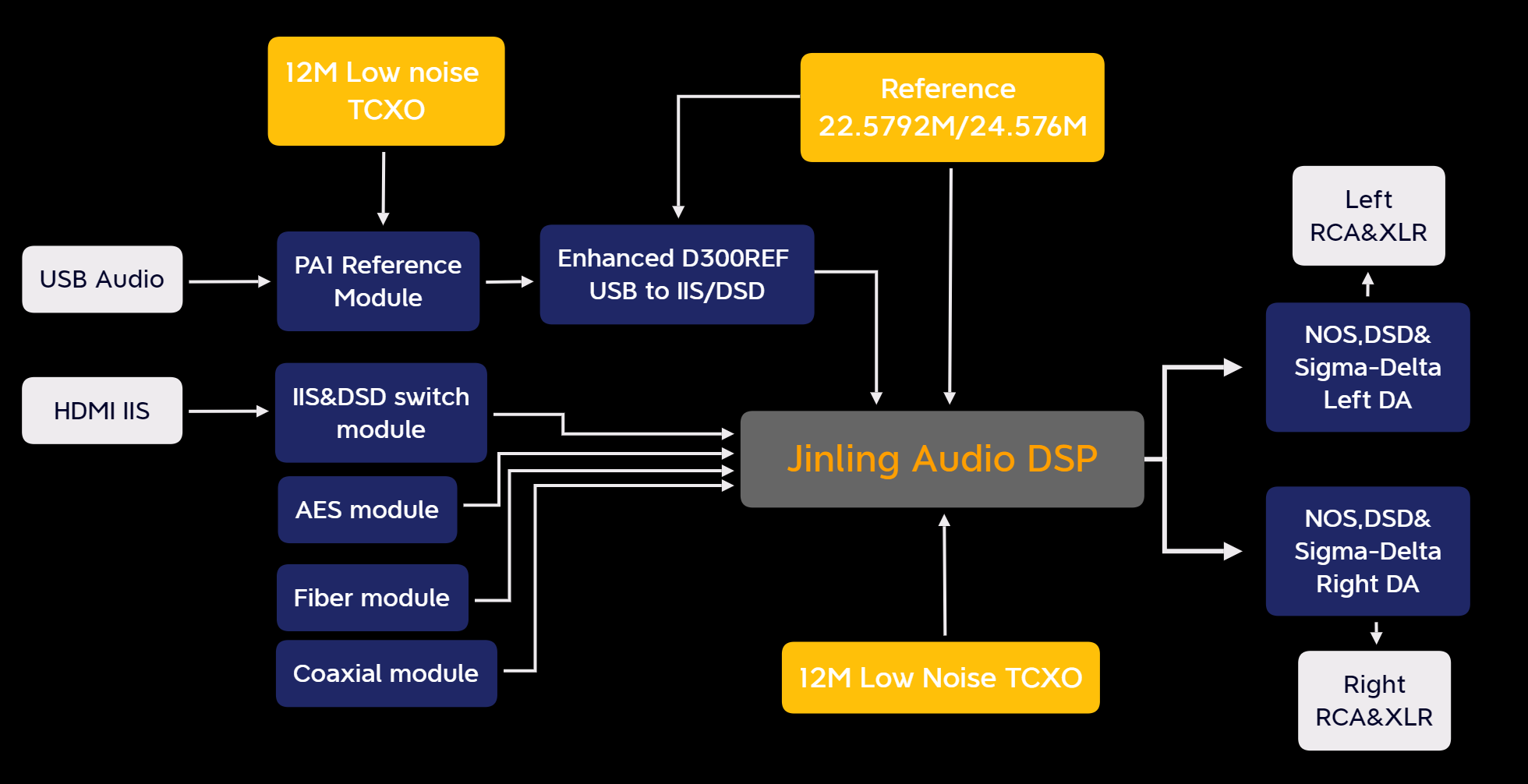
Through the separate design of the main unit and the power supply, DAM1 wholly eliminates the influence between the power supply and the core decoding function. Besides dissimilar power supplies can achieve diverse effects. This can meet the needs of more distinct audiophiles. Furthermore, DAM1 concentrates on the core function of true pure decoding, and the performance of each output interface is maintained at almost the same level.
Characteristics
Distortion -170dB
Built-in Jinling DSP provides <=-170dB 32bit SRC/ASRC upscaling + filtering function
5PS
Coaxial, optical, AES SPDIF to IIS output jitter 5ps is 10 times that of the current reference SPDIF chip
Hi-END clock
DAM1 uses audio frequency clock of 22.5792MHz and 24.576MHz, which is rare even in HIEND products, with +-0.05ppm, -145dBc/Hz (1KHz) noise after heating stabilization. Full analog linearized frequency adjustment output
3+1 Mode
Four decoding working modes (ALL NOS, ALL DSD, delta-sigma, SAW mode), internal intelligence
DSD256&PCM384KHz upscaling
Reference-level digital interface
Adopt D300REF reference interface enhancement, support DSD256 and PCM 384KHz, MQA hard expansion,customized professional ultra-low-latency driver. Strengthened interface with D300REF reference product, supports DSD256 and PCM 384KHz, MQA hard expansion (in certification), customized professional ultra-low latency driver.
Built-in PA1 reference USB module
The built-in identical PA1 USB reference module has the patented USB processing technology of the sound reference technology, which can avoid the effect of noise. What’s more, the clock signal is regenerated, which weakens the impact of USB input to a particularly low level.
Split design
Split design with complete independence of DAC and power supply, which is tailed for Hi-end effect.
Super capacitor power supply
One of the power supplies uses a reference-level super capacitor, which heightens the signal restore ability and detail performance to a higher level.
Musical power supply
Another power supply pays great attention to music appeal, expressiveness and sense of presence, which absolutely expresses the understanding of SOUNDAWARE in music performance.
16 Kinds of line sequence
Support HDMI IIS & DSD input with 16 kinds of line sequence, no corresponding line sequence diagram is required, and it can be configured with simple operation.
0.0001X% 129dB
THD+N 0.0001x of the whole machine distortion, 129dB dynamic ratio and signal-to-noise ratio, 800nV level of the whole output bottom noise.
Global clock
For this global unified clock, the sound can reach almost the same level whether it's coaxial, fiber optic, AES, or USB to IIS.
3+1 Upscaling decoding modes support multiple decoding usage scenarios to meet users with distinct styles and preferences
The reference-level performance and precision of <=-170dB distortion under 32bit, as well as the powerful digital filter performance are not unparalleled to the current finished DA chips. Meanwhile, after 4-year development, no matter what kind of output interface can use the global clock through Jinling DSP , so that no matter what kind of interface, the sound level is comparatively close. Owing to the fact that NOS, delta-sigma, and DSD have dissimilar decoding methods and dissimilar encoding characteristics, the styles and experiences of these three modes are also totally different. The SAW sound mode will intelligently select a default decoding method for users in line with diverse input channels and music formats.
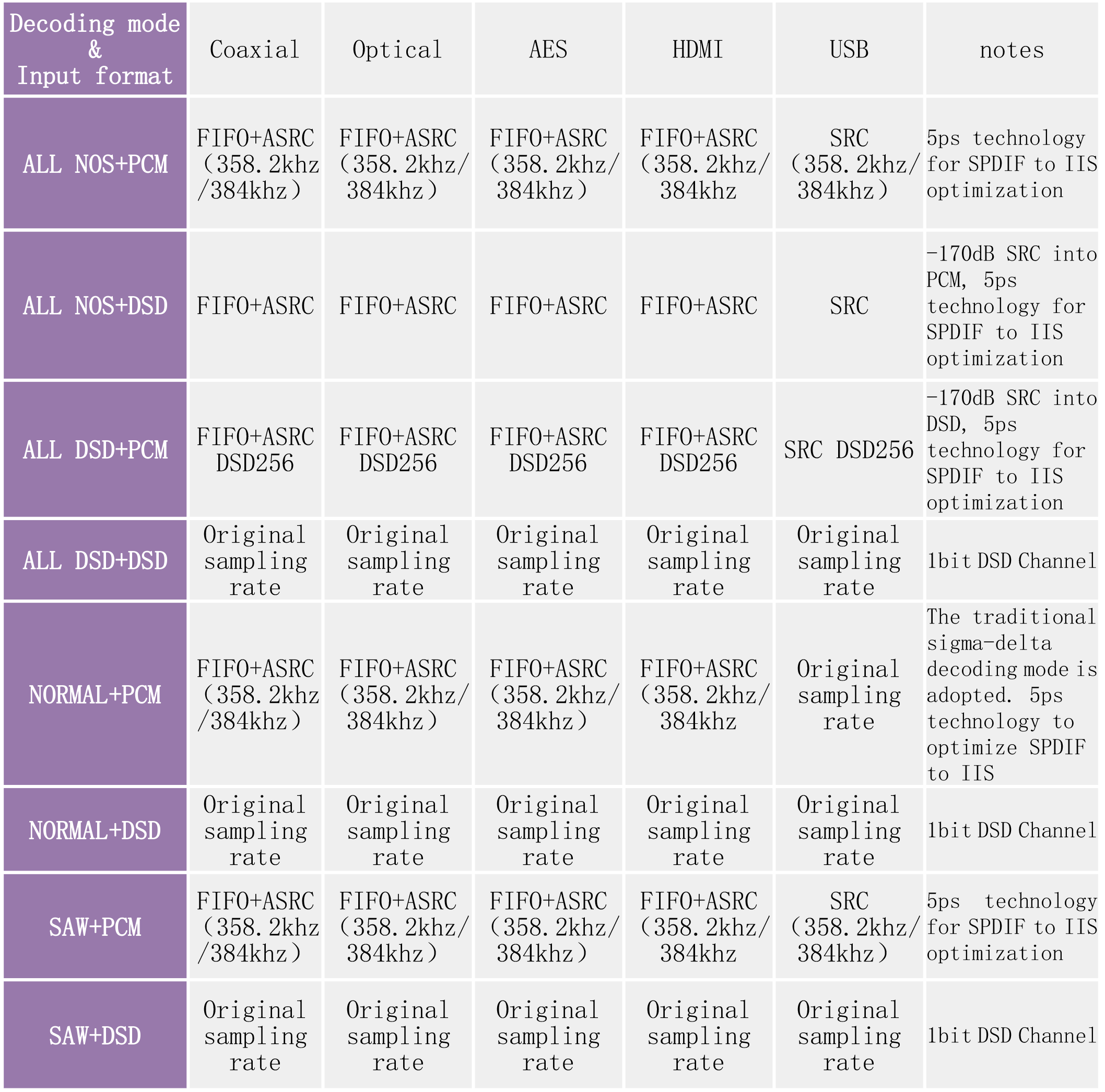
Interface Function
Rear Interface
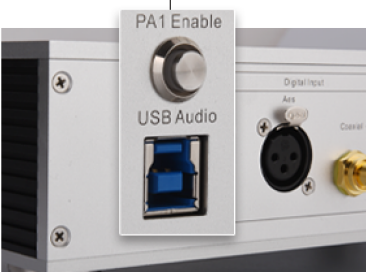
Integrate USB output of PA1 reference module, without fear of USB noise interference, reach the USB level of PA1 reference version. Moreover, it has a switch function, which can be used for tuning in some specific cases, DSD256, PCM384KHz, MQA full expansion.
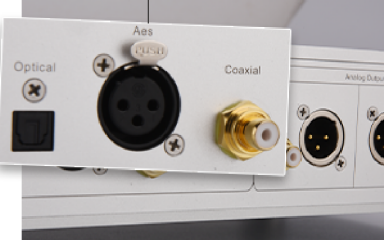
Optical (192KHz,DSD64) AES (384KHz, DSD128)Coaxial (384KHz,DSD128)Support reference-level high bit rate SPDIF input, and Jinling DSP will debounce, buffer and ASRC process the input signal, so that the clock jitter of SPDIF to IIS output is as low as 5ps.
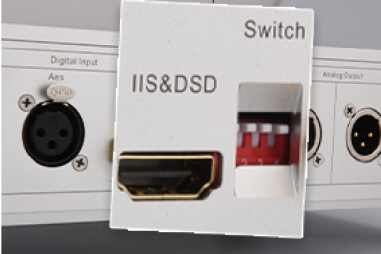
16 kinds of IIS&DSD HDMI input, absolutely support DSD256, PCM384KHz. The industry-referred protocol compatibility function, simplified configuration process, and powerful Jinling DSP debounce and SRC functions allow HDMI input to achieve a reference-level performance.
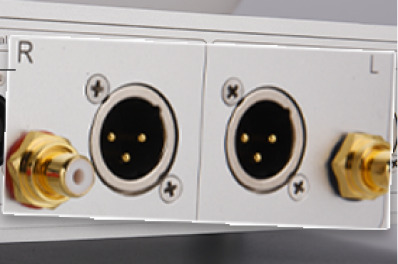
RCA and XLR can output simultaneously, and the output is delayed after power supply. It supports two levels of output to meet the needs of diverse preamps, headphone amps or integrated power amplifiers.
Front Interface
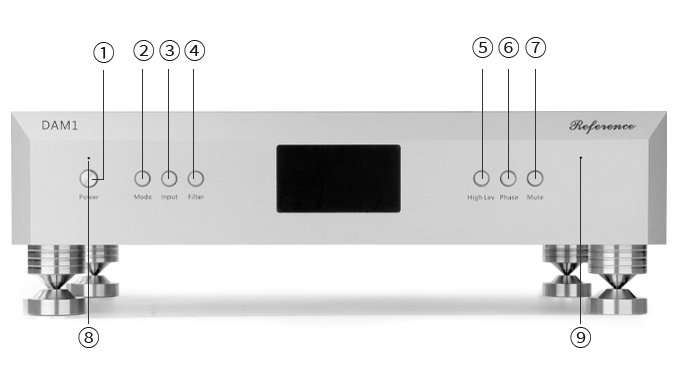
①Power button: Long press to switch on/off the machine; short press to turn off the screen, to minimize interference
②Mode selection: 4 types of output modes, meeting various playing methods. Including ALL NOS, ALL DSD, SAW SOUNDAWARE mode, and Normal delta-sigma mode
③Input selection: including USB, optical, coaxial, AES, HDMI IIS&DSD
④Filter settings only available in Normal mode
⑤Two level output selection buttons.
⑥Output phase selection button, press once to reverse once
⑦Mute button
⑧Power indicator light
⑨Infrared receiver
Reference level application of Jinling DSP
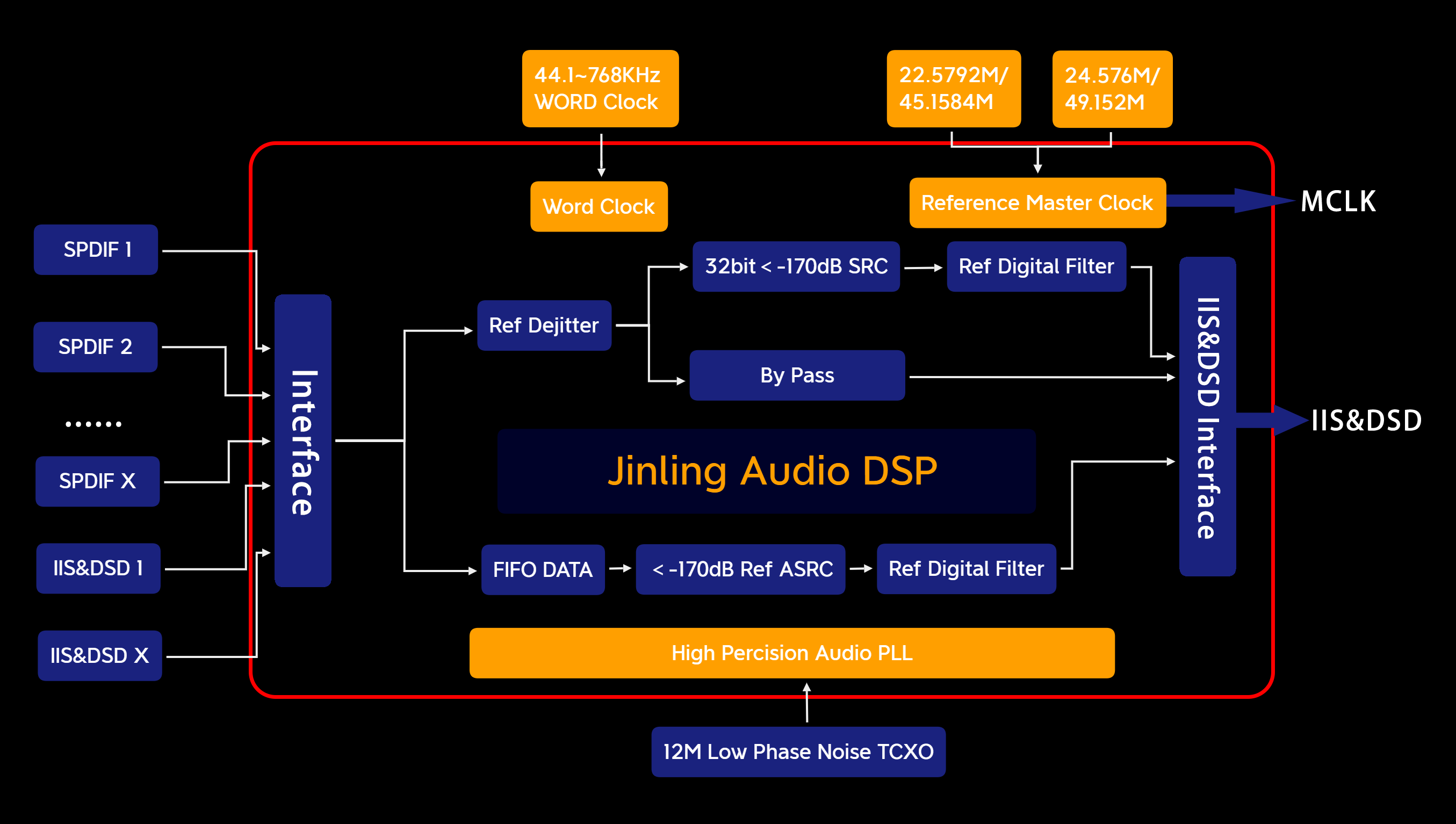
Dam1 is the first application of Jinling DSP, and it is also a real reference application. The core of the R&D of Jinling DSP is to cope with the problems triggered by the over-sampling and digital filter of the current top-level delta-sigma scheme. Through the -170dB SRC distortion of the reference stage and the external DSP digital filter of the reference stage, the integrated reference DA chip is optimized for the conversion speed and transient distortion of 10 times at low bit rate. These defects not only impose serious impact on the transition and coherence of the sound, but also are the dominant reason for strong digital sense. Aside from that, the separation of DSP and digital filter enables the pure DA process to obtain better indicators and performance, lessen the interference between each other, which is a solution tailored for Hi-END.
Jinling DSP's powerful -170dB distortion, 32bit precision SRC and ASRC performance, and reference-level filter function can make up for the deficiency of monotonicity and linearity of the current delta-sigma chip to a certain extent. The requirements of clock can also be lessened noticeably.
The significance of Jinling DSP is far more than that. For instance, the built-in DPLL+FIFO+ASRC technology can cope with the jitter problem of SPDIF (coaxial, optical, AES) to IIS. This is a core technology of professional DAC in the industry. The SPDIF to IIS output jitter of Jinling DSP is as low as 5ps, which is much lower than the industry reference level of 50ps.
Apart from that, Jinling DSP has a powerful unified clock management function. Regardless of USB, coaxial, optical, or AES, the same main clock can be used, and the global unified main clock management allows it to obtain almost consistent good sound no matter which channel is adopted.
Meanwhile, DAM1 has built-in automatic noise processing function, automatic protocol identification function as well as level matching function of DSD and PCM, which makes the whole usage process more comfortable and consistent.
Hi-END reference-level audio clock and integrated interface
The Jinling DSP+ reference level audio frequency clock makes the digital output of DAM1 truly Hi-END level.
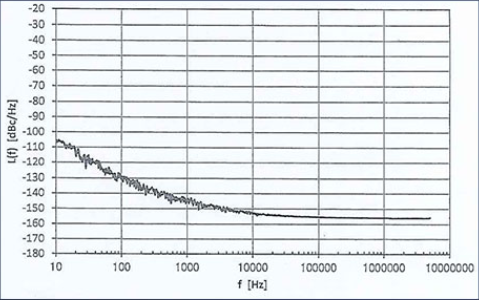
The USB interface part adopts the reinforced version of D300REF. Through the new version of XMOS, it integrates the sound-enhancing FPGA algorithm. XMOS original engineer consultant participated in the whole process of optimization, abandoned the code and functions of the original XMOS that were not conducive to sound, so as to make the output more excellent.
The built-in core USB processing module from PA1 reference edition minimizes the impact of noise on USB. Furthermore, the clock and signal are generated again. Consequently, it has the sound performance of PA1 reference edition.
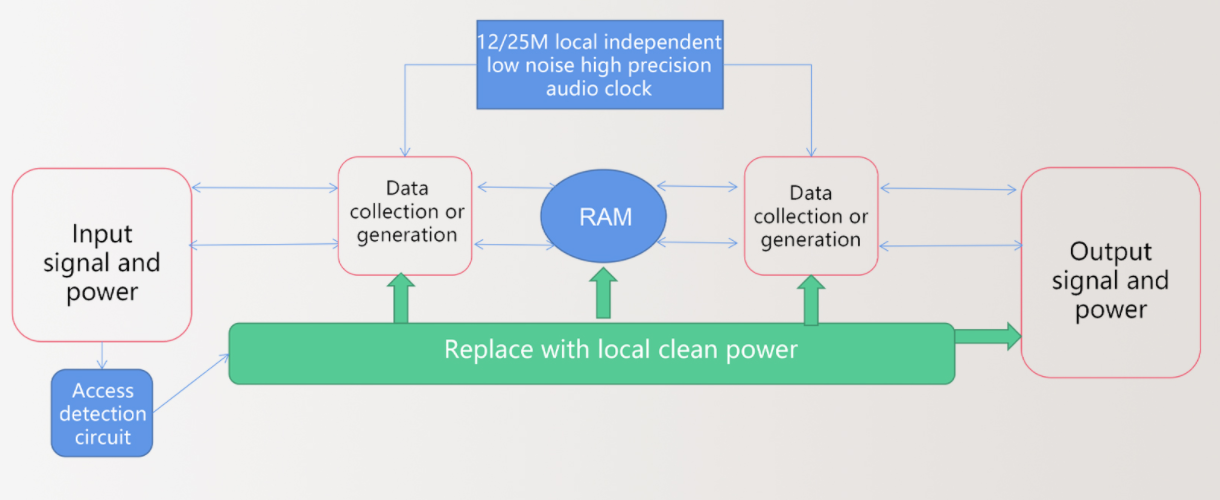
Pure mono DA decoding in three modes
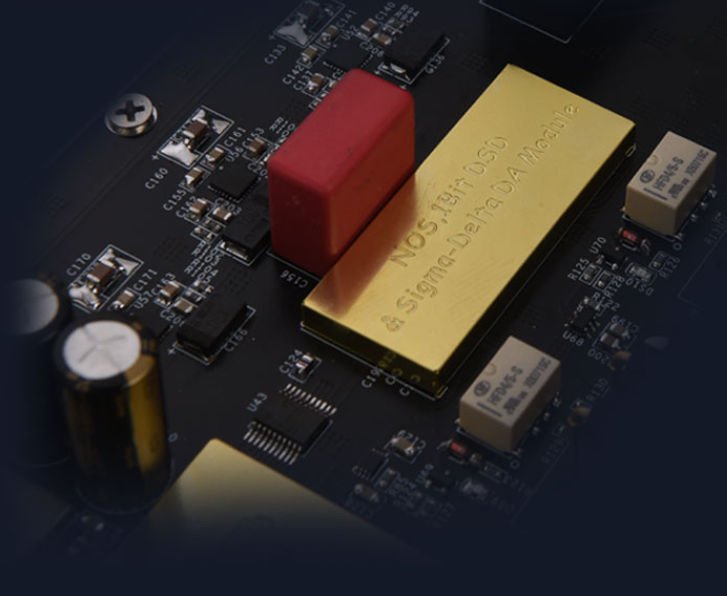
Because Jinling DSP has completed the high-performance filter function and SRC function, the DA process will be completely pure and simple. It’s worth mention that the most simple NOS mode without oversampling and filter can complete the entire PCM DA process, which holds true for 1bit DSDS. Definitely, we also retain the traditional delta-sigma decoding mode without DSP processing, which is convenient for comparison or use an external digital processor.
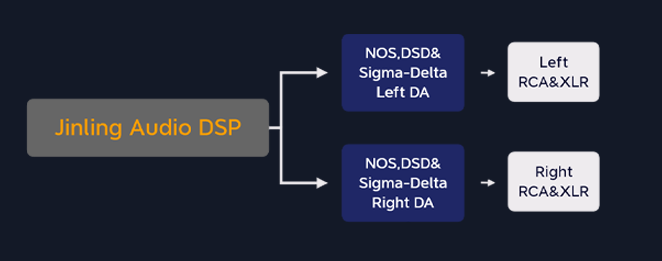
DAM1 uses two internal DA modules, which are respectively responsible for the pure DA function of the left and right sound channels, which can weaken crosstalk and influence to a tremendously low level. On account of its purity and simplicity, superior static indicator output is obtained. Nonetheless, , the score was slightly higher than the best score at static when listening was combined. The indicators of mass-produced products at 24bit 44.1khz are as follows:

Separate power supply, pure copper for secondary shielding, two matching power supply options
DAM1 and the power supply are completely independent and belong to dissimilar casings, which completely deals with mutual interference and vibration. Additionally, four internal shields are built in to shield the display screen, PA1 module, Jinling DSP and DA module, so as to lessen all possible interference.
The high current and ultra-low internal resistance design of the aviation current interface is to give full play to the effect of the power supply. The customizable DC cable can entirely reflect the excellent quality of the cable itself and provide more styles of sound.
LP1 customized version: pursue the fusion of auditory sense and high-performance, ameliorate the musicality on the basis of excellent restoration, and have the excellent auditory sense of traditional Hi-END DAC, and the sound is more advanced.
LPX supercapacitor version: pursue reference-level high-fidelity. Utilizing the super capacitor's powerful instantaneous discharge capacity of 2 mΩ and its pure characteristics, it can achieve unbelievably high reduction power, details, dynamics and control ability. The musicality and detail performance can be adjusted by customizing diverse DC cables and shock absorption.
Hi-END materials have reached the upper limit of mass production
1. 8 channels of 500mA and above secondary reference level regulated power supply system, 10Hz~100Hz noise as low as 4.x uV
2. Two-stage stabilized filter capacitor, the internal resistance of a single chip is as low as 5 mΩ and it is Hi-end in the industry
3.DAM1 uses some discontinued Hi-end materials. For sake of sound, it reaches the upper end of mass production
4. Specially customized high-performance stainless steel foot for isolation and shock absorption, blending tuning function
After 4 years and seven major versions of optimization
1. Under the situation when the sixth edition is satisfactory, another revision is made to reach the mass production version, mainly for the distortion of the 1.x dB difference between the left and right channels and to strengthen the shielding.
2. The seventh edition adds a larger material size, which can directly use traditional Hi-END reference level in-line materials to obtain better musicality.
3. Phase adjustment, dual-level output, and the design of lower noise when the screen is off, none of them are missing.
4. Customized deluxe shock-absorbing machine feet, the height of each foot can be fine-tuned, and the fusion of isolation and shock absorption achieves the maximum effect.
5. Automatic burst and mute processing, automatic level matching of various sampling rates, DSD, PCM. SRC has the same conversion level as ASRC.
6. Three times of appearance optimization and redesign, merely for the visual fit of that one..
Specification
Bare weight: 4.3kg
Size: 320x223X60mm
Power Consumption: ~10W
Power input: LP1 customized version 100~240V ; LPX super capacitor version ~220(110)V
Interface parameters:
USB: PCM384KHz, DSD256
(Standard USB2.0 interface, no fear of noise, support ordinary mobile phones, pads, PC to connect directly to get the best performance)
Optical input: PCM 192KHz, DSD(DOP) 64
AES input: PCM 384KHz, DSD(DOP) 128
Coaxial input: PCM 384KHz, DSD(DOP) 128
HDMI IIS input: support 16 kinds of IIS&DSD HDMI input line sequence, PCM 384KHz, DSD256
RCA analog output: 1.7VRms/2VRms
XLR analog output: 3.4VRms/4VRms
Q&A:
If PCM768KHz is to be supported, the frequency of the main clock needs to be doubled, thereby triggering a phase noise difference of about 3~6dB in the low frequency region of the high-performance clock, which is not advantageous for sound.
In order to support the supercapacitor power supply, owing to the fact that.the super capacitor power supply voltage is low, the current output voltage of about 5V cannot well support the DA process with a higher bit rate.
In consideration of the cost and maturity, the current 384KHz and DSD256-related chips or details are more mature and the cost is lower. Nonetheless, many DSD512 or PCM768KHz are immature and are only compatible. Providing that switching to DSD512 PCM 768KHz natively, the cost will increase significantly. For instance, if the voltage of the power supply needs to be increased, the cost of the crystal oscillator will increase several times if you wants to maintain the same noise and accuracy. Additional circuits should be added to lessen the frequency of the main clock (such as DSD mode, etc.).
DAM1 is a pure DAC focused on core decoding capabilities, and we don't want it to be overpriced. Currently DAM1 is extremely balanced in all aspects, and when matched to its performance, any increase in functionality will trigger skyrocketing costs. And that's not what we were designed to do.
Since both the SPDIF input and the USB input use the same local master clock, the principle is not particularly dissimilar, but the actual impact of the interface, such as optical fiber will be a little worse due to photoelectric conversion factors, if your USB output is exceedingly bad, or if the coaxial is more ordinary, the sound will not be tremendously good. As a result, it depends on the state of the input source. Therefore, each interface does not have any shortcomings, in accordance with the actual sound source/transport status can be freely selected.
This is prohibited, because the DAM1 host is a particularly sophisticated DAC, which is exceedingly sensitive to power fluctuations and noises. We have tried to connect the same voltage power supply to the DAM1 DAM1, resulting in damage to the DAM1 power supply. Therefore, we also warn on the back of the power supply and in the manual that non-official power supplies are not allowed to be connected to DAM1.
DAM1, as a Hi-END DAC, is undoubtedly fairly sensitive and enables you to hear details that you would not otherwise hear. With a high analytical power speaker system, it's easy to tell the difference between diverse configurations, shock absorption schemes, and power supplies. LPX is tremendously sensitive to DC wire and shock absorption. You can optimize and adjust the default DC wire and shock absorption of LPX and you may get unexpected results.

DAM1 is a Hi-END reference DAC developed by SOUNDAWARE for 4 years. It actually does not adopt the traditional reference-level DA chip default scheme to achieve desirable results. Instead, it adopts Jinling DSP audio processing architecture developed independently for 4 years, directly to NOS decoding and 1bit DSD decoding without oversampling and digital filtering, As a consequence, the serious transient distortion, undesirable linearity and monotone performance resulted from the traditional reference delta-sigma chip and digital filter are avoided, which will give rise to unsatisfactory coherence and obvious digital sense of the sound.Meanwhile, the built-in Jinling DSP provides reference upscaling and SRC with -170dB level distortion, greatly reducing the music sampling rate and clock requirements.
As a high-end DAC, DAM1 not only integrate more than 10-year experience in R&D and design of DAC module, but also uses luxurious materials. Most of the components are customized Hi-END materials, which have reached the upper limit of materials used in mass-produced products. Multitudinous materials have not even been used in high-end and reference-level DAC products in the industry in recent years.
DAM1 is called "Dream DAC" in our R&D team and user groups of SOUNDAWARE, and it can really stand out from the crowd. It doesn't do anything other than decode, it just does the core function and sound. As a consequence, it can control the price, and finally becomes a Hi-END level reference decoder that a multitude of audiophile and deep music lovers can afford.

Through the separate design of the main unit and the power supply, DAM1 wholly eliminates the influence between the power supply and the core decoding function. Besides dissimilar power supplies can achieve diverse effects. This can meet the needs of more distinct audiophiles. Furthermore, DAM1 concentrates on the core function of true pure decoding, and the performance of each output interface is maintained at almost the same level.
Characteristics
Distortion -170dB
Built-in Jinling DSP provides <=-170dB 32bit SRC/ASRC upscaling + filtering function
5PS
Coaxial, optical, AES SPDIF to IIS output jitter 5ps is 10 times that of the current reference SPDIF chip
Hi-END clock
DAM1 uses audio frequency clock of 22.5792MHz and 24.576MHz, which is rare even in HIEND products, with +-0.05ppm, -145dBc/Hz (1KHz) noise after heating stabilization. Full analog linearized frequency adjustment output
3+1 Mode
Four decoding working modes (ALL NOS, ALL DSD, delta-sigma, SAW mode), internal intelligence
DSD256&PCM384KHz upscaling
Reference-level digital interface
Adopt D300REF reference interface enhancement, support DSD256 and PCM 384KHz, MQA hard expansion,customized professional ultra-low-latency driver. Strengthened interface with D300REF reference product, supports DSD256 and PCM 384KHz, MQA hard expansion (in certification), customized professional ultra-low latency driver.
Built-in PA1 reference USB module
The built-in identical PA1 USB reference module has the patented USB processing technology of the sound reference technology, which can avoid the effect of noise. What’s more, the clock signal is regenerated, which weakens the impact of USB input to a particularly low level.
Split design
Split design with complete independence of DAC and power supply, which is tailed for Hi-end effect.
Super capacitor power supply
One of the power supplies uses a reference-level super capacitor, which heightens the signal restore ability and detail performance to a higher level.
Musical power supply
Another power supply pays great attention to music appeal, expressiveness and sense of presence, which absolutely expresses the understanding of SOUNDAWARE in music performance.
16 Kinds of line sequence
Support HDMI IIS & DSD input with 16 kinds of line sequence, no corresponding line sequence diagram is required, and it can be configured with simple operation.
0.0001X% 129dB
THD+N 0.0001x of the whole machine distortion, 129dB dynamic ratio and signal-to-noise ratio, 800nV level of the whole output bottom noise.
Global clock
For this global unified clock, the sound can reach almost the same level whether it's coaxial, fiber optic, AES, or USB to IIS.
3+1 Upscaling decoding modes support multiple decoding usage scenarios to meet users with distinct styles and preferences
The reference-level performance and precision of <=-170dB distortion under 32bit, as well as the powerful digital filter performance are not unparalleled to the current finished DA chips. Meanwhile, after 4-year development, no matter what kind of output interface can use the global clock through Jinling DSP , so that no matter what kind of interface, the sound level is comparatively close. Owing to the fact that NOS, delta-sigma, and DSD have dissimilar decoding methods and dissimilar encoding characteristics, the styles and experiences of these three modes are also totally different. The SAW sound mode will intelligently select a default decoding method for users in line with diverse input channels and music formats.

Interface Function
Rear Interface

Integrate USB output of PA1 reference module, without fear of USB noise interference, reach the USB level of PA1 reference version. Moreover, it has a switch function, which can be used for tuning in some specific cases, DSD256, PCM384KHz, MQA full expansion.

Optical (192KHz,DSD64) AES (384KHz, DSD128)Coaxial (384KHz,DSD128)Support reference-level high bit rate SPDIF input, and Jinling DSP will debounce, buffer and ASRC process the input signal, so that the clock jitter of SPDIF to IIS output is as low as 5ps.

16 kinds of IIS&DSD HDMI input, absolutely support DSD256, PCM384KHz. The industry-referred protocol compatibility function, simplified configuration process, and powerful Jinling DSP debounce and SRC functions allow HDMI input to achieve a reference-level performance.

RCA and XLR can output simultaneously, and the output is delayed after power supply. It supports two levels of output to meet the needs of diverse preamps, headphone amps or integrated power amplifiers.
Front Interface

①Power button: Long press to switch on/off the machine; short press to turn off the screen, to minimize interference
②Mode selection: 4 types of output modes, meeting various playing methods. Including ALL NOS, ALL DSD, SAW SOUNDAWARE mode, and Normal delta-sigma mode
③Input selection: including USB, optical, coaxial, AES, HDMI IIS&DSD
④Filter settings only available in Normal mode
⑤Two level output selection buttons.
⑥Output phase selection button, press once to reverse once
⑦Mute button
⑧Power indicator light
⑨Infrared receiver
Reference level application of Jinling DSP

Dam1 is the first application of Jinling DSP, and it is also a real reference application. The core of the R&D of Jinling DSP is to cope with the problems triggered by the over-sampling and digital filter of the current top-level delta-sigma scheme. Through the -170dB SRC distortion of the reference stage and the external DSP digital filter of the reference stage, the integrated reference DA chip is optimized for the conversion speed and transient distortion of 10 times at low bit rate. These defects not only impose serious impact on the transition and coherence of the sound, but also are the dominant reason for strong digital sense. Aside from that, the separation of DSP and digital filter enables the pure DA process to obtain better indicators and performance, lessen the interference between each other, which is a solution tailored for Hi-END.
Jinling DSP's powerful -170dB distortion, 32bit precision SRC and ASRC performance, and reference-level filter function can make up for the deficiency of monotonicity and linearity of the current delta-sigma chip to a certain extent. The requirements of clock can also be lessened noticeably.
The significance of Jinling DSP is far more than that. For instance, the built-in DPLL+FIFO+ASRC technology can cope with the jitter problem of SPDIF (coaxial, optical, AES) to IIS. This is a core technology of professional DAC in the industry. The SPDIF to IIS output jitter of Jinling DSP is as low as 5ps, which is much lower than the industry reference level of 50ps.
Apart from that, Jinling DSP has a powerful unified clock management function. Regardless of USB, coaxial, optical, or AES, the same main clock can be used, and the global unified main clock management allows it to obtain almost consistent good sound no matter which channel is adopted.
Meanwhile, DAM1 has built-in automatic noise processing function, automatic protocol identification function as well as level matching function of DSD and PCM, which makes the whole usage process more comfortable and consistent.
Hi-END reference-level audio clock and integrated interface
The Jinling DSP+ reference level audio frequency clock makes the digital output of DAM1 truly Hi-END level.

The USB interface part adopts the reinforced version of D300REF. Through the new version of XMOS, it integrates the sound-enhancing FPGA algorithm. XMOS original engineer consultant participated in the whole process of optimization, abandoned the code and functions of the original XMOS that were not conducive to sound, so as to make the output more excellent.
The built-in core USB processing module from PA1 reference edition minimizes the impact of noise on USB. Furthermore, the clock and signal are generated again. Consequently, it has the sound performance of PA1 reference edition.

Pure mono DA decoding in three modes

Because Jinling DSP has completed the high-performance filter function and SRC function, the DA process will be completely pure and simple. It’s worth mention that the most simple NOS mode without oversampling and filter can complete the entire PCM DA process, which holds true for 1bit DSDS. Definitely, we also retain the traditional delta-sigma decoding mode without DSP processing, which is convenient for comparison or use an external digital processor.

DAM1 uses two internal DA modules, which are respectively responsible for the pure DA function of the left and right sound channels, which can weaken crosstalk and influence to a tremendously low level. On account of its purity and simplicity, superior static indicator output is obtained. Nonetheless, , the score was slightly higher than the best score at static when listening was combined. The indicators of mass-produced products at 24bit 44.1khz are as follows:

Separate power supply, pure copper for secondary shielding, two matching power supply options
DAM1 and the power supply are completely independent and belong to dissimilar casings, which completely deals with mutual interference and vibration. Additionally, four internal shields are built in to shield the display screen, PA1 module, Jinling DSP and DA module, so as to lessen all possible interference.
The high current and ultra-low internal resistance design of the aviation current interface is to give full play to the effect of the power supply. The customizable DC cable can entirely reflect the excellent quality of the cable itself and provide more styles of sound.
LP1 customized version: pursue the fusion of auditory sense and high-performance, ameliorate the musicality on the basis of excellent restoration, and have the excellent auditory sense of traditional Hi-END DAC, and the sound is more advanced.
LPX supercapacitor version: pursue reference-level high-fidelity. Utilizing the super capacitor's powerful instantaneous discharge capacity of 2 mΩ and its pure characteristics, it can achieve unbelievably high reduction power, details, dynamics and control ability. The musicality and detail performance can be adjusted by customizing diverse DC cables and shock absorption.
Hi-END materials have reached the upper limit of mass production
1. 8 channels of 500mA and above secondary reference level regulated power supply system, 10Hz~100Hz noise as low as 4.x uV
2. Two-stage stabilized filter capacitor, the internal resistance of a single chip is as low as 5 mΩ and it is Hi-end in the industry
3.DAM1 uses some discontinued Hi-end materials. For sake of sound, it reaches the upper end of mass production
4. Specially customized high-performance stainless steel foot for isolation and shock absorption, blending tuning function
After 4 years and seven major versions of optimization
1. Under the situation when the sixth edition is satisfactory, another revision is made to reach the mass production version, mainly for the distortion of the 1.x dB difference between the left and right channels and to strengthen the shielding.
2. The seventh edition adds a larger material size, which can directly use traditional Hi-END reference level in-line materials to obtain better musicality.
3. Phase adjustment, dual-level output, and the design of lower noise when the screen is off, none of them are missing.
4. Customized deluxe shock-absorbing machine feet, the height of each foot can be fine-tuned, and the fusion of isolation and shock absorption achieves the maximum effect.
5. Automatic burst and mute processing, automatic level matching of various sampling rates, DSD, PCM. SRC has the same conversion level as ASRC.
6. Three times of appearance optimization and redesign, merely for the visual fit of that one..
Specification
Bare weight: 4.3kg
Size: 320x223X60mm
Power Consumption: ~10W
Power input: LP1 customized version 100~240V ; LPX super capacitor version ~220(110)V
Interface parameters:
USB: PCM384KHz, DSD256
(Standard USB2.0 interface, no fear of noise, support ordinary mobile phones, pads, PC to connect directly to get the best performance)
Optical input: PCM 192KHz, DSD(DOP) 64
AES input: PCM 384KHz, DSD(DOP) 128
Coaxial input: PCM 384KHz, DSD(DOP) 128
HDMI IIS input: support 16 kinds of IIS&DSD HDMI input line sequence, PCM 384KHz, DSD256
RCA analog output: 1.7VRms/2VRms
XLR analog output: 3.4VRms/4VRms
Q&A:
- Why DAM1 only supports PCM384KHz, DSD256?
If PCM768KHz is to be supported, the frequency of the main clock needs to be doubled, thereby triggering a phase noise difference of about 3~6dB in the low frequency region of the high-performance clock, which is not advantageous for sound.
In order to support the supercapacitor power supply, owing to the fact that.the super capacitor power supply voltage is low, the current output voltage of about 5V cannot well support the DA process with a higher bit rate.
In consideration of the cost and maturity, the current 384KHz and DSD256-related chips or details are more mature and the cost is lower. Nonetheless, many DSD512 or PCM768KHz are immature and are only compatible. Providing that switching to DSD512 PCM 768KHz natively, the cost will increase significantly. For instance, if the voltage of the power supply needs to be increased, the cost of the crystal oscillator will increase several times if you wants to maintain the same noise and accuracy. Additional circuits should be added to lessen the frequency of the main clock (such as DSD mode, etc.).
- Why doesn't DAM1 add preamp function or network interface?
DAM1 is a pure DAC focused on core decoding capabilities, and we don't want it to be overpriced. Currently DAM1 is extremely balanced in all aspects, and when matched to its performance, any increase in functionality will trigger skyrocketing costs. And that's not what we were designed to do.
- Among all the input interfaces, which one has the best sound?
Since both the SPDIF input and the USB input use the same local master clock, the principle is not particularly dissimilar, but the actual impact of the interface, such as optical fiber will be a little worse due to photoelectric conversion factors, if your USB output is exceedingly bad, or if the coaxial is more ordinary, the sound will not be tremendously good. As a result, it depends on the state of the input source. Therefore, each interface does not have any shortcomings, in accordance with the actual sound source/transport status can be freely selected.
- Aside from the LP1 customized version and super capacitor power supply version, can we customize the power supply to DAM1?
This is prohibited, because the DAM1 host is a particularly sophisticated DAC, which is exceedingly sensitive to power fluctuations and noises. We have tried to connect the same voltage power supply to the DAM1 DAM1, resulting in damage to the DAM1 power supply. Therefore, we also warn on the back of the power supply and in the manual that non-official power supplies are not allowed to be connected to DAM1.
- What aspects is DAM1 sensitive to, and how to pay attention?
DAM1, as a Hi-END DAC, is undoubtedly fairly sensitive and enables you to hear details that you would not otherwise hear. With a high analytical power speaker system, it's easy to tell the difference between diverse configurations, shock absorption schemes, and power supplies. LPX is tremendously sensitive to DC wire and shock absorption. You can optimize and adjust the default DC wire and shock absorption of LPX and you may get unexpected results.

|
Stay updated on Soundaware at their sponsor profile on Head-Fi.
|








 Thank you for liking it!
Thank you for liking it!
